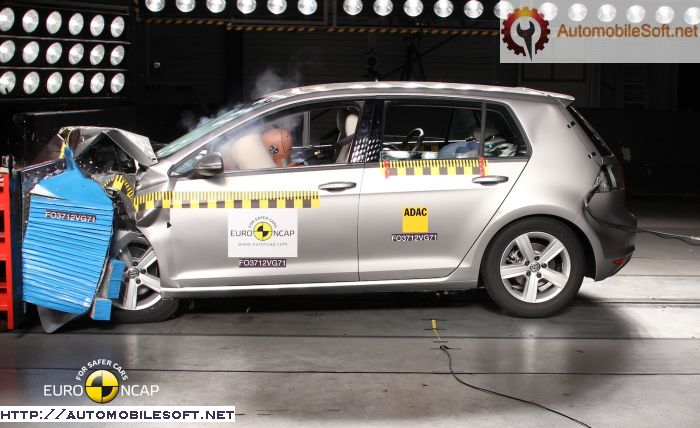Controlled deformable body structures.
Crumple zone
Unlike old-generation cars which were built of heavy plate and metal solid elements that were minimally affected at bodywork level after a light and medium collision, modern cars shows following such collisions profound and ample deformations of the resistance structure which give the feeling of fragility and instability.
In reality, security cell of modern vehicles is much more solid to provide much needed vital space of occupants but the rest of the resistance structure is designed so as to absorb the shock and to dissipate the huge amount of stored kinetic energy.

Bodyshell
The importance of dissipation this amounts of kinetic energy resides in the fact that almost any shock with a so-called non-deformable barrier (fence, trees, poles, heavy vehicle, etc.) it would send entirely to occupants who would suffer damage and injuries incompatible with life, despite of existing passive safety components in the vehicle. Therefore, the life and health of a vehicle occupants and pedestrians are above any damage.
A heavier car is more dangerous because it involves some forces much larger than a light car. Acceleration is equal to mass times velocity squared.
About what acceleration force has a 2500 kg car compared to one of 1300 kg? A tank is not necessarily safer than a small car.
Enter witha a tank and a Ford Fiesta into a rock wall with 50 km/h. The tank could remain intact; the driver will certainly be more wrinkled (if not dead) than in Fiesta.[That is "tank" has "thick sheet metal" ,etc does not matter. More importantly, is "crumple zone" that at new cars in case of major impact it means you send it for scrap and you'll buy another, and at the old cars ... YOU are crumple zones.]Trends in achieving the “safe” vehicle
Resistance structures of current automobiles have become real works of art, this is the result of increasingly close competition between major car manufacturers.
Each case of accident is unique. A theme concerning countermeasures that should improve security of occupants in case of a frontal collisions involve:

Resistance structures
An acceptable threshold limit of deccelerations that can withstand the human body obliges manufacturers to make vehicles with controlled deformable front structure and after certain laws of deccelerations variation.
Together with safety belts and airbags, the safety cell, which is resistance to deformation, that surrounds the passenger compartment and the front and rear deformation areas are among the key elements in the Passive Safety List of a vehicle. All this provides passengers with an increased level of safety, reducing the effects of impact energies during an accident.


Dragan
Hello, nice informative article.
Bruce Fisherman
RE Ford Fiesta MK1.
My neighbor across the street collided with the passenger side door of my Ford Fiesta at relatively high speed. She was backing out of her driveway in my home town.
The auto’s crush zone or space prevented any personal injury to me.
I would like to know what are the engineered limits for an impact that a Ford Fiesta MK1 is engineered for
Michael N
The more the body of a car torsioned and deforms less on uneven roads or during the approach with the high speed of the turns, the greater the torsional rigidity of the vehicle respectively, thus being more secure in handling.